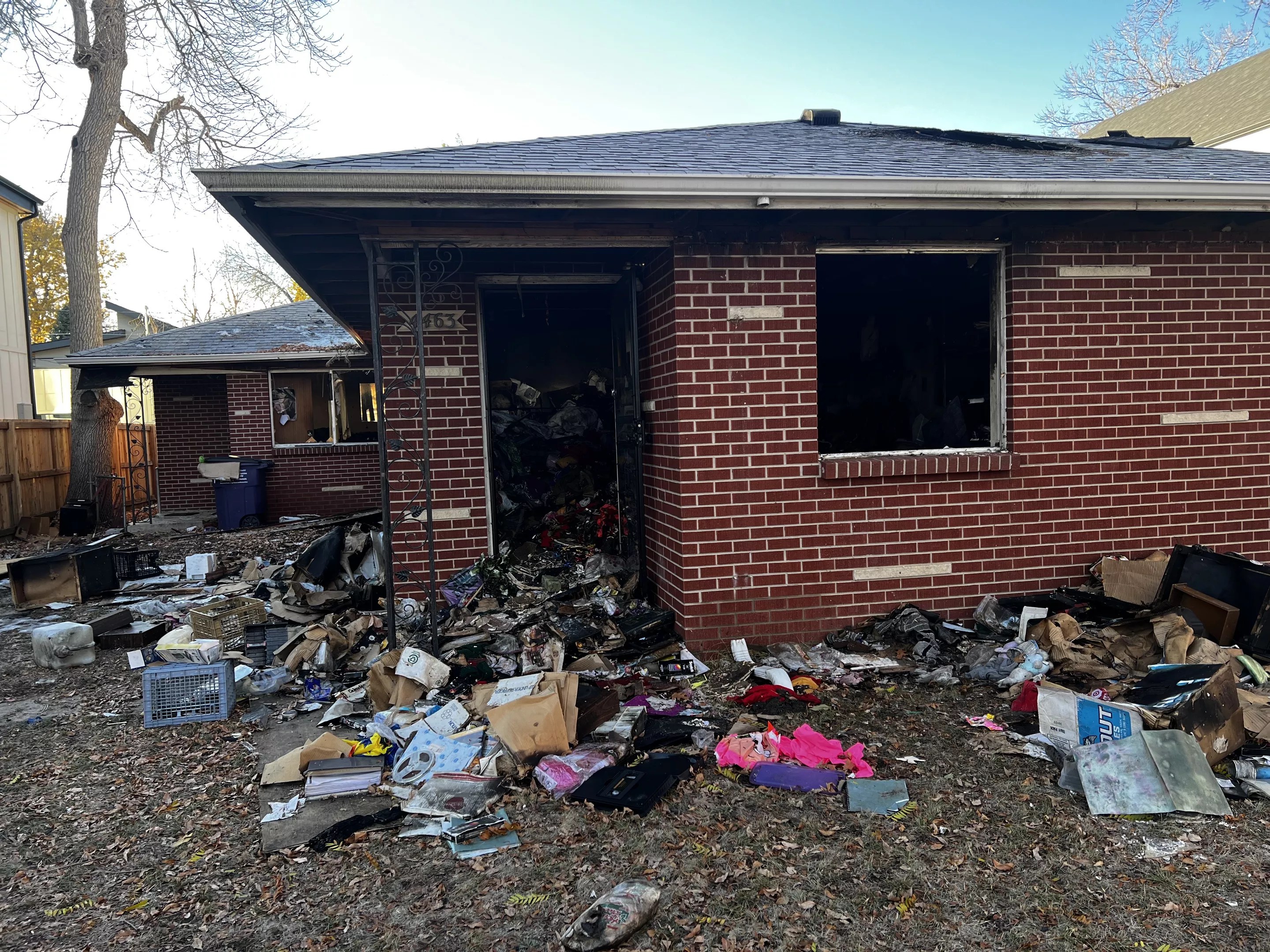
Janet Carlander

Audio By Carbonatix
If it seemed like more vacant buildings were hanging around the city this year, you weren’t wrong: Stories about decrepit buildings and the ills that befell neighbors living around them were abundant, and the City of Denver added 160 properties to its neglected and derelict building registry.
In fact, the question of what to do with problem properties is projected to be a top priority for Denver City Council in the coming months, after one councilmember worked to identify what has been dubbed the problem property “doom loop.”
Amanda Sawyer’s office identified nine city agencies that regularly interact with problem properties – from the Department of Community Planning & Development, which oversees the neglected and derelict building registry, to the Denver Department of Public Health & Environment, which is in charge of potential health issues, to the Denver Police Department’s community resource officers, who are in charge of wellness checks.
CPD is working to get the problems under control, despite dealing with a slew of negligent owners who make problem property cases difficult to close. According to James Hick, a CPD administrator who has managed the neglected and derelict building program for the last year, the city has worked to identify qualifying properties before crimes, or fires, occur inside them.
Denver, make your New Year’s Resolution Count!
We’re $17,500 away from our End-of-Year campaign goal, with just a five days left! We’re ready to deliver — but we need the resources to do it right. If Westword matters to you, please contribute today to help us expand our current events coverage when it’s needed most.
Properties can be added to the NADB list if they are partially or wholly boarded or vacant for three or more months without evidence of construction.
“There were many properties in the City and County of Denver that should have been on the neglected and derelict list but were not,” Hicks says. “We don’t know if that is neighbors that have given up on making complaints, or if they had not risen to the level where they would have gotten to our department.”
CPD worked with the city council to find vacant buildings that could cause problems and retrained its inspectors to better identify properties that might qualify; as a result, around 160 properties were added to the NADB list this year. In 2023, CPD added just 34, and in 2022, fewer than forty properties made the list, Hicks says.
“That’s not because the number of properties dramatically increased this year,” he adds. “It’s just that we were better at identifying and finding properties before they got to that worst step, which is when they would usually get reported to us.”
That worst step can sometimes involve abandoned buildings catching fire as unhoused people wander inside and create warming fires that grow out of control, which happened in Denver’s Berkeley neighborhood this fall. Hicks says that if people see illegal activity or fires they should call 911, but the city hopes people will call 311 before a property gets that bad – if they notice no one seems to be there, for example, or a building is boarded up. When properties get on the city’s radar earlier, the theory is that the city can engage owners and take preventative measures before a worst-case scenario happens.
But plenty of worst cases did happen this year. On Denver’s bail row, one building was eventually bulldozed after a fire. On Lincoln Street, an exploded fourplex took eleven months to be cleaned up because the city couldn’t get ahold of the owners of the property.
Denver is by no means the only city dealing with these problems; Englewood is now contemplating what to do about vacant nuisance buildings, as are other Colorado cities like Lakewood and Pueblo.
According to Hicks, Denver’s goal for next year is to hold forty show-cause hearings on vacant properties, which allow the city to increase civil penalties on nuisance buildings should the owners not prove they are doing what they can to keep their properties in good repair. Denver had stopped holding hearings over the last few years; in 2023, it held nineteen.
“That will be most of our backlog, so then we’ll be able to move these properties through this process quicker rather than the years-long process that it used to take,” Hicks says of the forty hearings projected for 2024. “We’re hoping to get caught up with all of our properties that require an administrative hearing for us to start those fees, and then we can look at next steps for our worst properties, which would be looking at receivership.”
Still, questions about how to deal with vacant buildings aren’t going away just because 2024 is ending.